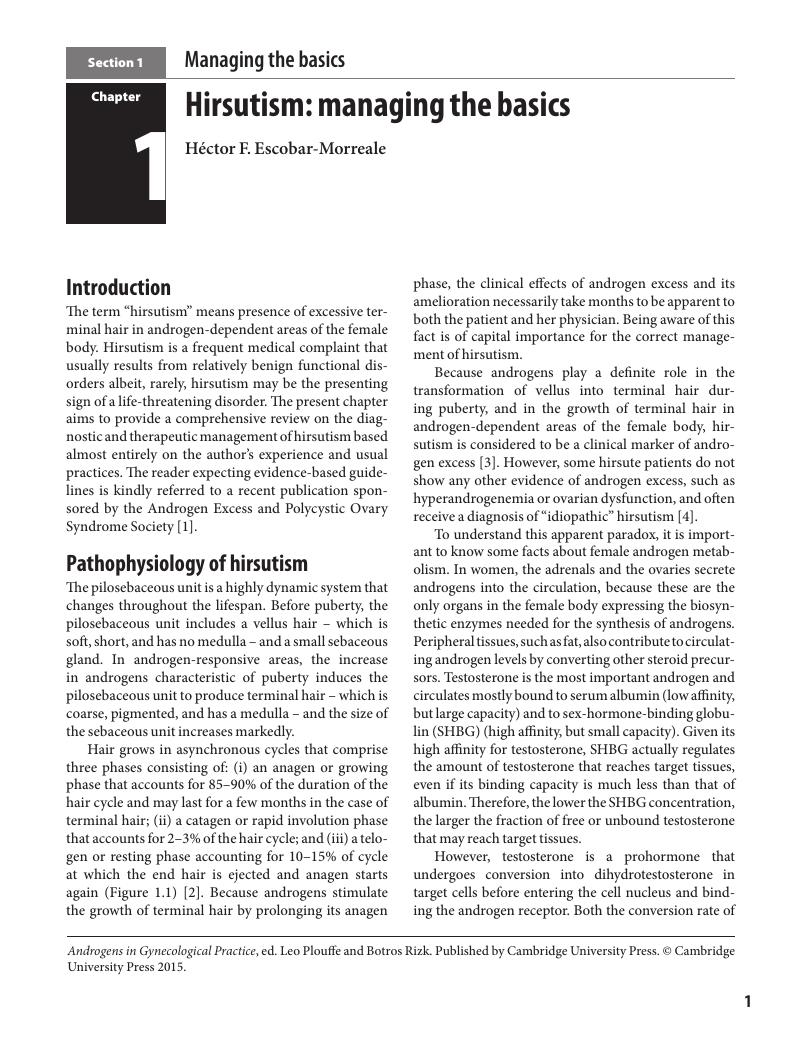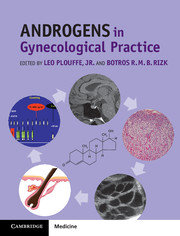Book contents
- Androgens in Gynecological Practice
- Androgens in Gynecological Practice
- Copyright page
- Contents
- About the editors
- Dedication
- Contributors
- Preface
- Section 1 Managing the basics
- 1 Hirsutism: managing the basics
- 2 Alopecia: managing the basics
- 3 Polycystic ovary syndrome: managing the basics
- 4 Sexual dysfunction, including hypoactive sexual desire disorder: Diagnosis and treatment recommendations
- Section 2 The scientific essentials
- Section 3 Learning from the extremes
- Section 4 The tool kit
- Index
- Plate Section
- References
1 - Hirsutism: managing the basics
from Section 1 - Managing the basics
Published online by Cambridge University Press: 05 July 2015
- Androgens in Gynecological Practice
- Androgens in Gynecological Practice
- Copyright page
- Contents
- About the editors
- Dedication
- Contributors
- Preface
- Section 1 Managing the basics
- 1 Hirsutism: managing the basics
- 2 Alopecia: managing the basics
- 3 Polycystic ovary syndrome: managing the basics
- 4 Sexual dysfunction, including hypoactive sexual desire disorder: Diagnosis and treatment recommendations
- Section 2 The scientific essentials
- Section 3 Learning from the extremes
- Section 4 The tool kit
- Index
- Plate Section
- References
Summary

- Type
- Chapter
- Information
- Androgens in Gynecological Practice , pp. 1 - 10Publisher: Cambridge University PressPrint publication year: 2015

